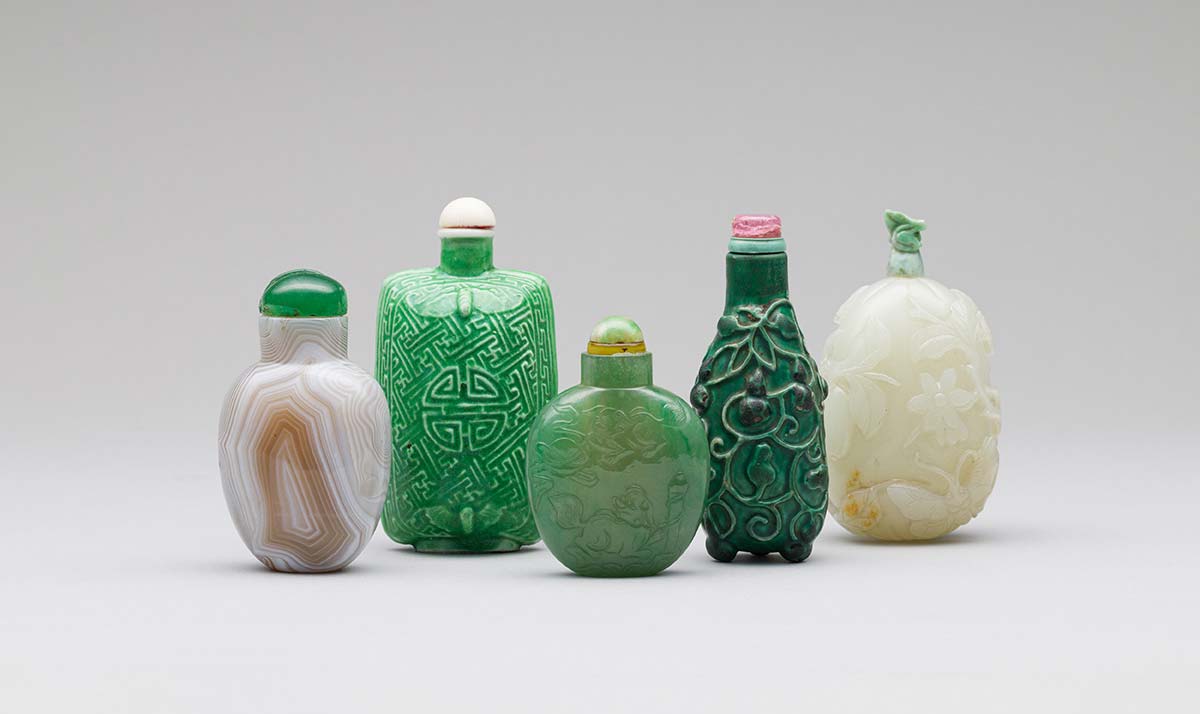Treasures in the palm of the hand
The pieces on display in this exhibition, a total of approximately 240, date from the 18th and 19th centuries, a collection of snuff bottles which were manufactured in China from the end of the 17th century.
Snuff bottles were manufactured in China from the end of the 17th century to contain ground tobacco, or to permit the inhaling of snuff, also called ‘’Amostrinha tobacco’’ to designate a yellow tobacco leaf of superior quality taken from the middle of the plant’s stem. It was used for medicinal purposes in the treatment of a wide range of illnesses, from headaches, respiratory infections, cataracts, cramps, toothaches, to even killing roundworms and lice.
It was in the palm of the hand or rolled up in sleeves that these receptacles were a common presence in Chinese society both as a utilitarian object and symbol of refinement and social status during the 18th and 19th centuries, a time when their manufacture became more widespread.
Produced in diverse materials such as minerals, ceramics, ivory, lacquer and others, they allow, through their painted or sculpted surfaces, a glimpse of what Chinese everyday life was like, alongside their tastes, iconography, enigmas, myths and legends.
The pieces on display in this exhibition, a total of approximately 240, date from the 18th and 19th centuries, and belong to the collections of the Museu do Oriente and Museu Nacional Machado de Castro (Coimbra), the latter being deposited at the Museu do Oriente and corresponding to the ‘’Manuel Teixeira Gomes Collection’’, and both result from the interest, and trend, for collecting art objects so in vogue throughout the 19th century.
Dettagli
- www.foriente.pt
- Museu do OrienteAvenida Brasília, Doca de Alcântara (Norte)1350-352Lisboa
- Da 29 set, 2023 a 01 set, 2024
- Gratuito

